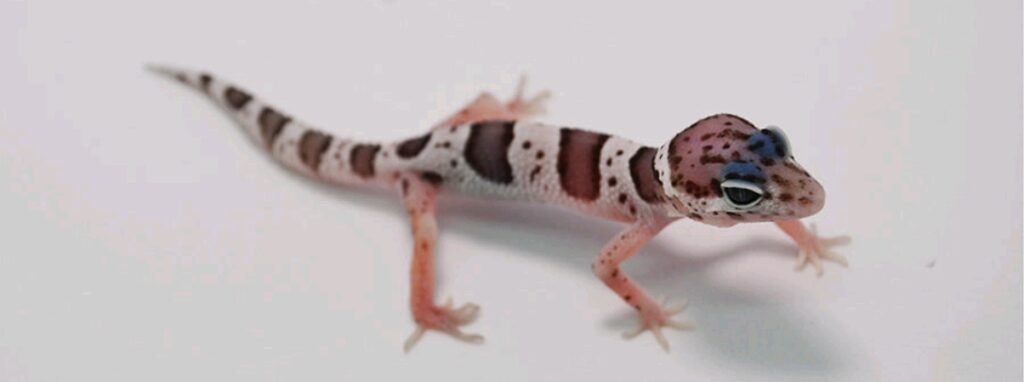The tiny, pebble-like egg cracks open, and an equally diminutive creature emerges into the warmth of its nurturing home. This, the birth of a Leopard Gecko Baby, is an event that fascinates many reptile enthusiasts around the globe. Subject to debate, inquiry, and analysis, the life cycle of this enchanting reptile beholds deeper intricacies than one might initially presume.

“To merely perceive the Leopard Gecko as a simple, low-maintenance pet is to neglect the profound complexity of its lifecycle, particularly its infancy.”
Eublepharis macularius, known colloquially as the Leopard Gecko, originates robustly from the rocky, dry grassland and desert regions of Afghanistan, Pakistan, India, and Iran. The remarkable process of its growth from egg to adult is a subject worth exploring in the microscopic detail. Each stage, from the vulnerable infancy to the resilient adulthood, is a testament to the incredible adaptability and strength that this reptile possesses, especially considering the harsh environments they originally hail from.
READ ALSO: Dog Hair Taking Over Your Carpet? Try These 7 Simple Solutions
The major hallmark of the Leopard Gecko lifecycle is the vibrantly intricate patterns and hues that adorn its thick, scaly skin as it matures, hence the ‘leopard’ moniker. With this genetic diversity, the species offers a fascinating spectacle for both amateur keepers and seasoned herpetologists alike. To further enhance our understanding and appreciation of this captivating creature, we will delve into the life cycle of the Leopard Gecko, focusing specifically on the inception, the newborn stage.
What do you feed a baby leopard gecko?
In the vast ecosystem of reptiles, there are few creatures as enthralling as the leopard gecko. The mere mention of a baby leopard gecko inevitably awakens an avid curiosity, for in their diminutive forms, these geckos embody a captivating blend of elegance and charm. Yet, behind their enchanting allure lies a critical responsibility. For any prospective or new owner, there stands out one particularly pivotal question – ‘What do you feed a baby leopard gecko?’.
The diet of a baby leopard gecko is intrinsic to its growth, overall health, and lifespan. While fully grown leopard geckos have a wider range of diet offerings, the digestive systems of baby geckos are more sensitive, requiring specialized care and dietary considerations. Therefore, it necessitates a clear understanding of what kind of sustenance these delicate creatures require.
The ideal diet for a baby leopard gecko should be protein-heavy and small enough to be easily consumed. Above all, it should be nutritionally balanced to foster proper development.
To concise to the question, a baby leopard gecko’s diet consists of several types of feeder insects. Their feeding routine requires routine but carefully moderated offerings. Hence, the art of feeding these beautiful creatures is both systematic and selective.
- Small Crickets: Crickets make up a significant portion of a baby leopard gecko’s diet. However, they should be appropriately sized – no larger than the space between the gecko’s eyes.
- Mealworms: Rich in proteins, mealworms serve as a staple in their diet but need careful administration due to a hard outer layer.
- Waxworms: Though waxworms provide a rich source of fat, they should only be given as an occasional treat due to their high-fat content.
This, however, is but a basic overview. The art of feeding a baby leopard gecko takes on different nuances that require deeper understanding.
What is the lifespan of a baby leopard gecko
The lifespan of a leopard gecko, an aspect of its nature that never fails to garner fascination, is a testament to its resilience and adaptability. Emerging into the world as tiny, vulnerable hatchlings, these babies embark on a journey that could span over two decades, setting them apart from many other pet reptiles.
With optimal care, baby leopard geckos, Eublepharis macularius as they are scientifically named, have the potential to live up to 20 years or more. Indeed, there have been instances where these spirited creatures have celebrated their 30th birthday, showcasing an impressive longevity in captivity.
It is this longevity than adds to the allure of leopard geckos as pets. They are not just a fleeting presence but a long-term companion, offering years of interaction, learning, and mutual camaraderie. But this impressive lifespan is not a given; it’s largely dependent on factors such as diet, habitat, preventive healthcare, and the level of attention bestowed upon them by their caretakers.
Care is Key
Therefore, it’s worth noting that with the privilege of hosting these geckos comes the responsibility of ensuring their health and longevity. In their natural habitat, leopard geckos deal with threats such as predation and harsh environmental conditions, factors that potentially reduce their lifespan. However, in captivity, where these threats are obviated, it is often the lack of proper care that can act as a detriment to their longevity.
For instance, feeding baby leopard geckos a balanced diet replete with nutrients gives them a solid foundation for a long, healthy life. Equally, housing them in an environment that matches their natural habitat goes a long way in alleviating stress and promoting overall wellbeing. Regular vet check-ups to identify and treat any health issues early can dramatically increase their life expectancy.
In conclusion, while leopard geckos are naturally equipped with the capacity for a long life, actualizing this potential is a loving endeavor that calls for meticulousness, patience, and a deep understanding of their needs and behaviors. Ushering these tiny creatures from their vulnerable baby phases to full, enriching adulthood is no small feat, but it is an incredibly rewarding journey lined with countless moments of joy and discovery.